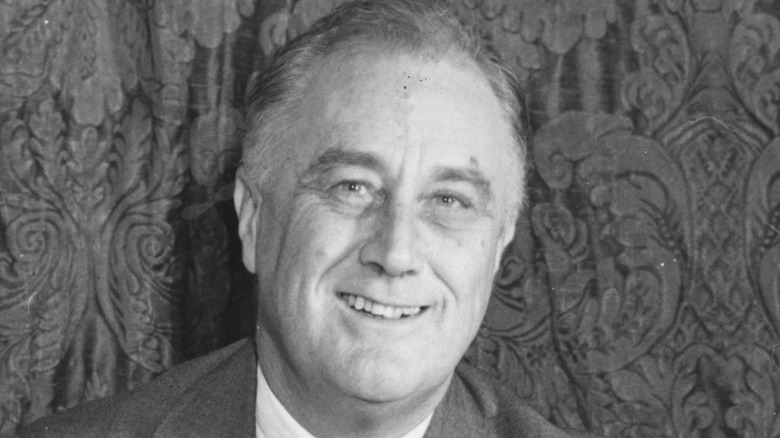Franklin D. Roosevelt Was Diagnosed With This Preventable Disease
In April 1945, Franklin D. Roosevelt, the 32nd president of the United States, died of a cerebral hemorrhage. At the time, he was visiting the Georgia Warm Springs Foundation, a polio rehabilitation center he funded and frequented. Nearly 24 years earlier, Roosevelt was diagnosed with poliomyelitis (via Town & Country). More commonly known as polio, the viral disease attacks the central nervous system and can potentially cause temporary or permanent paralysis. Although polio usually affects young children under the age of five, Roosevelt was diagnosed with the disease in 1921 when he was 39 years old.
The disease left him permanently paralyzed from the waist down, rendering him unable to stand or walk without support. As a result, Roosevelt used a wheelchair throughout most of his political career. However, he almost never made public appearances in a wheelchair — despite the fact that his diagnosis wasn't totally a secret. He instead opted for a cane, leg braces, and physical assistance in public.
What is polio?
Polio is a highly contagious viral disease spread through human-to-human transmission from infected fecal matter or nasal droplets entering the mouth (via Healthline). Caused by the poliovirus, around 95 to 99% of people who contract polio are asymptomatic, but they can still infect and spread the virus to others. If symptoms do occur, however, they can take up to a week to appear after being infected. For people with non-paralytic polio, symptoms can include fever, fatigue, sore threat, headache, vomiting, and meningitis. These signs and symptoms typically last between 7 and 10 days.
Paralytic polio, however, is much more rare and severe. Less than 1% of polio cases will result in paralysis in either the spinal cord, brainstem, or sometimes both. While most cases of paralytic polio will initially share the same symptoms of nonparalytic polio, after a week or so symptoms will begin to progress and become more severe. For instance, people with paralytic polio may experience severe muscle spasms and pain, loss of reflexes, loose limbs, deformities in the hips, ankles, and feet, and temporary or permanent paralysis.
While polio is still incurable, it is now entirely preventable thanks to the invention of the polio vaccine in 1953. As a result, polio has been completely eradicated in the United States.


